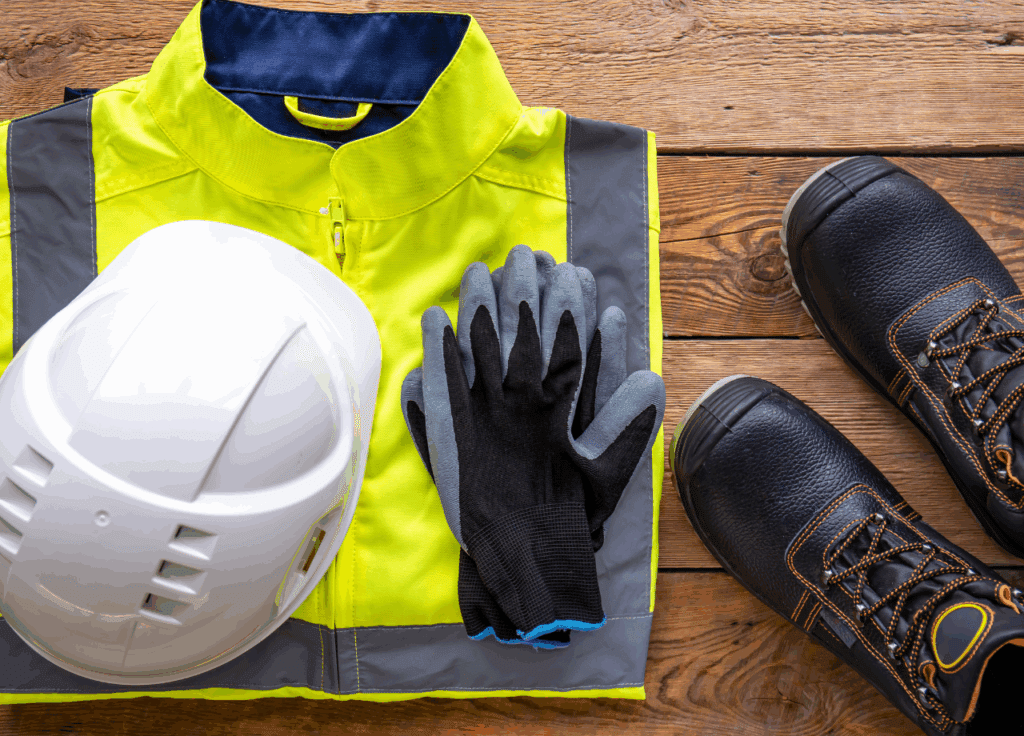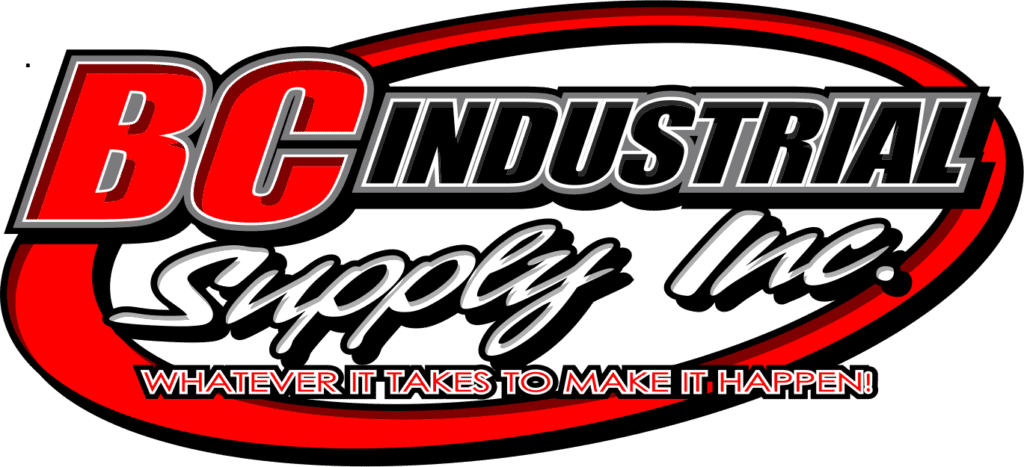Construction work in Florida presents unique challenges that demand specific safety precautions. High humidity, intense sunlight, and unpredictable weather patterns contribute to a demanding work environment that requires reliable safety gear. Florida also has strict OSHA enforcement, making proper PPE not just a recommendation but a regulatory necessity.
At BC Industrial Supply, we support contractors and crews with high-quality safety equipment that meets state and federal standards. Whether it’s hot-weather gear, head protection, or high-visibility apparel, we stock what professionals need to stay safe and compliant on the job.
Table of Contents
Understanding Florida-Specific Construction Hazards
Florida’s climate plays a significant role in determining what type of safety gear is appropriate. Prolonged exposure to high temperatures can cause dehydration, heat exhaustion, and even heatstroke. These conditions make breathable, lightweight, and moisture-wicking PPE essential. Afternoon thunderstorms and hurricane threats mean job sites must also prepare for slippery surfaces, strong winds, and sudden evacuations.
The state’s booming construction sector, driven by ongoing infrastructure and housing developments, results in congested worksites. Workers often operate heavy machinery near each other, increasing the risk of accidents. This environment heightens the need for protective headgear, eye and ear protection, and reinforced footwear.
Another key factor is Florida’s diverse terrain and worksite locations. From coastal areas to inland developments, the environment can shift drastically within a short distance. Some areas may involve swampy or muddy terrain, requiring waterproof gear and traction-enhanced footwear. Coastal job sites also face higher exposure to corrosive salt air, which can degrade certain types of protective gear more quickly.
Personal Protective Equipment (PPE) Requirements
Construction workers in Florida are required to wear specific PPE depending on the nature of the job. Standard categories include head protection, eye and face protection, hearing protection, respiratory protection, hand protection, foot protection, and fall protection.
Helmets or hard hats must meet ANSI Z89.1 standards and should be inspected regularly for signs of wear or damage. In Florida’s heat, ventilated hard hats with moisture-wicking liners are preferable. Some hard hats even feature integrated sun shields to reduce glare and enhance comfort under the intense Florida sun.
Eye protection must conform to ANSI Z87.1 and should protect against both impact and UV exposure. Tinted safety glasses or goggles with anti-fog coatings are often necessary for outdoor jobs. Workers involved in cutting, grinding, or welding should wear face shields or specialty eyewear tailored to those tasks.
Ear protection is critical in areas where noise levels exceed OSHA’s permissible exposure limits. Options include foam earplugs, earmuffs, or custom-fitted devices. In high-noise environments like demolition sites or areas with continuous equipment operation, double protection (plugs plus muffs) may be warranted.
Workers handling chemicals or exposed to dust must use respirators certified by NIOSH. Selecting the right filter or cartridge depends on the specific contaminants present. In hot, humid conditions, it’s crucial that respirators fit comfortably and maintain an effective seal even when the worker sweats.
Footwear and Hand Protection
Foot injuries are among the most common on construction sites. Steel-toe or composite-toe boots with slip-resistant soles are required for most tasks. In Florida, waterproof or moisture-resistant footwear also helps prevent fungal infections caused by wet working conditions. Additional insulation may be necessary for jobs requiring contact with hot surfaces, like asphalt paving.
For specialized environments, boots with puncture-resistant soles, metatarsal guards, or electric hazard ratings may be required. On slippery surfaces or muddy grounds, boots with deep-lugged soles provide better stability and reduce fall risk.
Gloves should match the task. Cut-resistant gloves are necessary for handling sheet metal, while insulated gloves may be needed for electrical work. Chemical-resistant gloves are essential when handling hazardous substances. All gloves should allow flexibility and grip without compromising safety. In Florida’s climate, choosing gloves made from breathable materials helps reduce sweat and discomfort during extended use.
High-Visibility Apparel and Traffic Control Gear
Florida’s construction sites often operate near busy roads or in areas with active vehicle movement. High-visibility vests, shirts, and jackets must comply with ANSI/ISEA 107 standards. Bright colors like lime green or orange with reflective striping help ensure workers are seen both during the day and under artificial lighting.
Garments should be durable, moisture-wicking, and designed to resist fading from constant sun exposure. For night work or low-visibility conditions, Class 3 garments with full-body reflective coverage are preferred.
Flaggers and workers operating in traffic zones also require additional signage, barriers, and lighting to control and redirect vehicles safely. Proper placement and maintenance of cones, barrels, and signs are essential to prevent collisions. Temporary lighting should be sufficient to illuminate the work zone without creating glare that could obscure workers or equipment.

Fall Protection and Site-Specific Safety Systems
Falls are a leading cause of injury and death on construction sites. In Florida, where multi-story buildings and roofing work are common, fall protection systems are mandatory. Harnesses, lanyards, anchor points, and guardrails must be properly installed and used according to OSHA 1926 Subpart M.
Each worksite should have a fall protection plan that includes equipment checks, training, and rescue procedures. Florida’s humidity can affect harness materials over time, so regular inspections and replacements are crucial. Fall protection gear should be lightweight but durable, with corrosion-resistant components to withstand the coastal climate.
Guardrails and scaffolding should be installed by qualified personnel, and toe boards must be used to prevent falling tools. Training is not optional—workers must know how to properly don, adjust, and anchor fall protection gear, and they should rehearse rescue plans regularly.
Equipment Portability and Setup
Construction projects often involve remote or mobile worksites, making portability a factor. MIG welding machines tend to be more rugged and easier to transport, especially compact models designed for jobsite use. Setup time is minimal, and many units come with synergic controls for quick parameter selection.
TIG welders typically involve more setup time, including separate gas cylinders, foot pedals, and additional accessories for controlling amperage. These setups can be more cumbersome to move and may not be ideal in tight or rugged environments.
When portability and quick deployment matter, MIG units have the advantage. For bench welding or controlled shop environments, TIG can be deployed without those limitations.
Weather-Responsive Safety Gear
Due to the risk of sudden weather changes, workers should be equipped with rain gear that doesn’t hinder mobility or visibility. Lightweight rain suits with reflective material help keep workers dry while staying visible in low-light or stormy conditions. Breathable rain gear is especially valuable in Florida to avoid overheating during wet weather.
For extreme heat, cooling vests, neck wraps, and hydration packs are essential. These tools reduce core body temperature and help prevent heat-related illnesses. Hydration stations should be positioned throughout the site, and workers should be encouraged to take frequent breaks in shaded or air-conditioned areas.
Sunscreen, wide-brim hats, and UV-blocking safety glasses add another layer of protection during peak sunlight hours. Heat stress monitoring tools, such as digital thermometers or wearable sensors, can also provide early warnings of overheating. Supervisors must be trained to recognize the symptoms of heat stress and respond immediately.
Ideal Applications in Construction Settings
MIG welding is well-suited to structural steel, heavy equipment repair, and general fabrication tasks. It’s often used for welding I-beams, pipe, brackets, handrails, and steel frames where strength and speed are prioritized.
TIG welding is a better choice for detailed metalwork, stainless components, and tasks where joint integrity and appearance are critical. HVAC installations, handrails on public buildings, stainless countertops, and aluminum piping often call for TIG precision.
Larger construction projects may require both MIG and TIG capabilities at different stages, depending on the scope of work and material requirements.
Site Safety Culture and Training
No safety gear can replace proper training and a culture of accountability. Every crew member must understand not just how to use their equipment but why it’s necessary. Tailgate meetings and jobsite walk-throughs help reinforce procedures and identify potential risks before they cause injury.
Supervisors should lead by example, always wearing appropriate PPE and enforcing rules consistently. New hires should undergo detailed orientation sessions, and all staff should participate in ongoing safety training. In Florida, where job sites vary widely and weather changes rapidly, adaptability and awareness are key.
Documentation of safety plans, inspections, and incident reports should be kept up to date and reviewed regularly. Partnering with suppliers who understand Florida’s challenges ensures that gear remains relevant, durable, and compliant with regulations.
Final Thoughts
Construction safety in Florida requires more than a standard checklist. It demands gear that accounts for heat, rain, visibility, and physical hazards specific to the region. From proper footwear and headgear to fall protection and weather-specific apparel, every item plays a role in protecting lives and improving jobsite efficiency.
By investing in the right protective equipment and staying aware of OSHA and state regulations, contractors can protect their workforce and maintain productivity year-round. The right safety gear is not just a regulatory requirement—it’s a critical part of every successful job.

